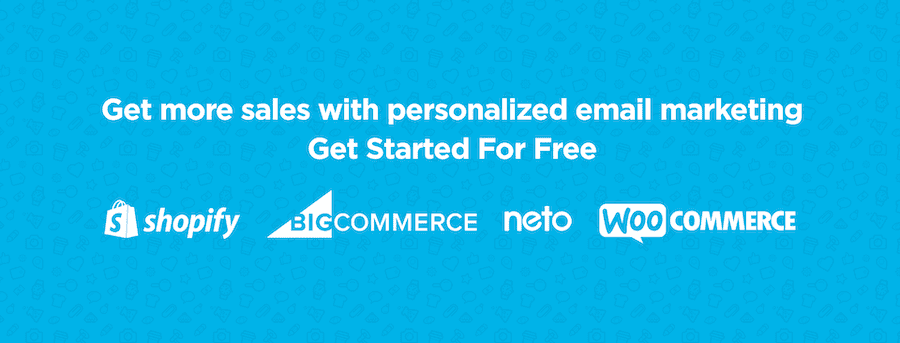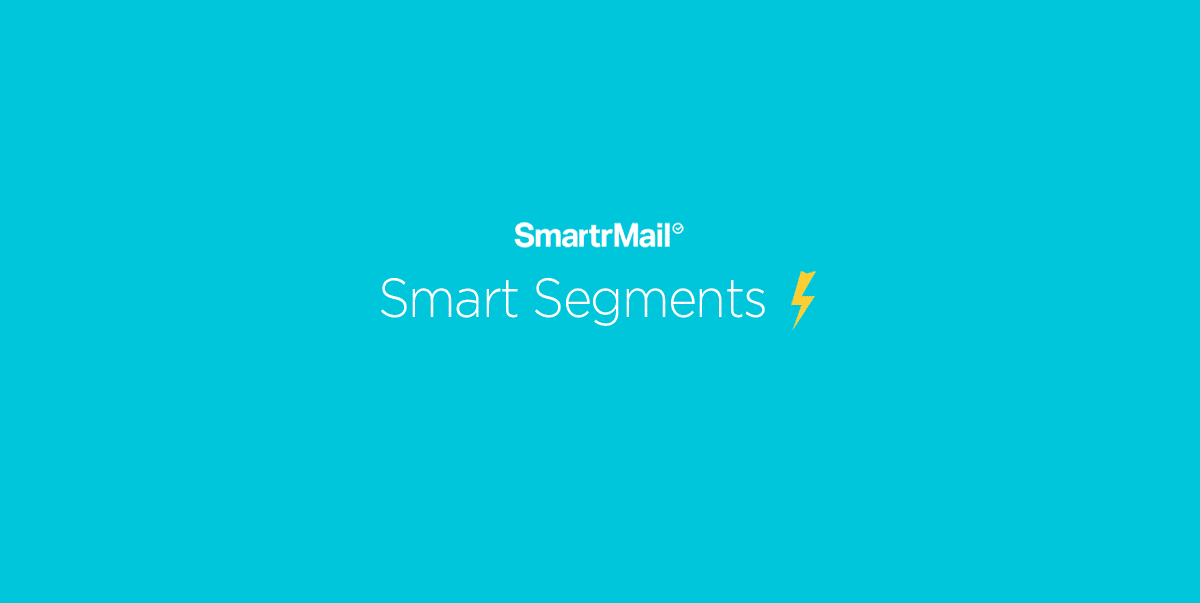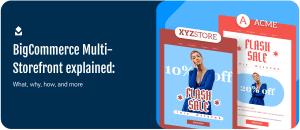If you’ve read anything about email marketing before, you’ll have undoubtedly heard about email list segmentation. Email marketers swear by it – and for good reason too. Marketers who used this strategy experienced a 39% increase in open rates. MarketingSherpa also wrote about how a company doubled their open rate and tripled their click-through rate by implementing email segmentation in their marketing.
It’s simple – by not segmenting your email lists, you’re losing out on potential sales.
Take this email I received from ASOS as an example.
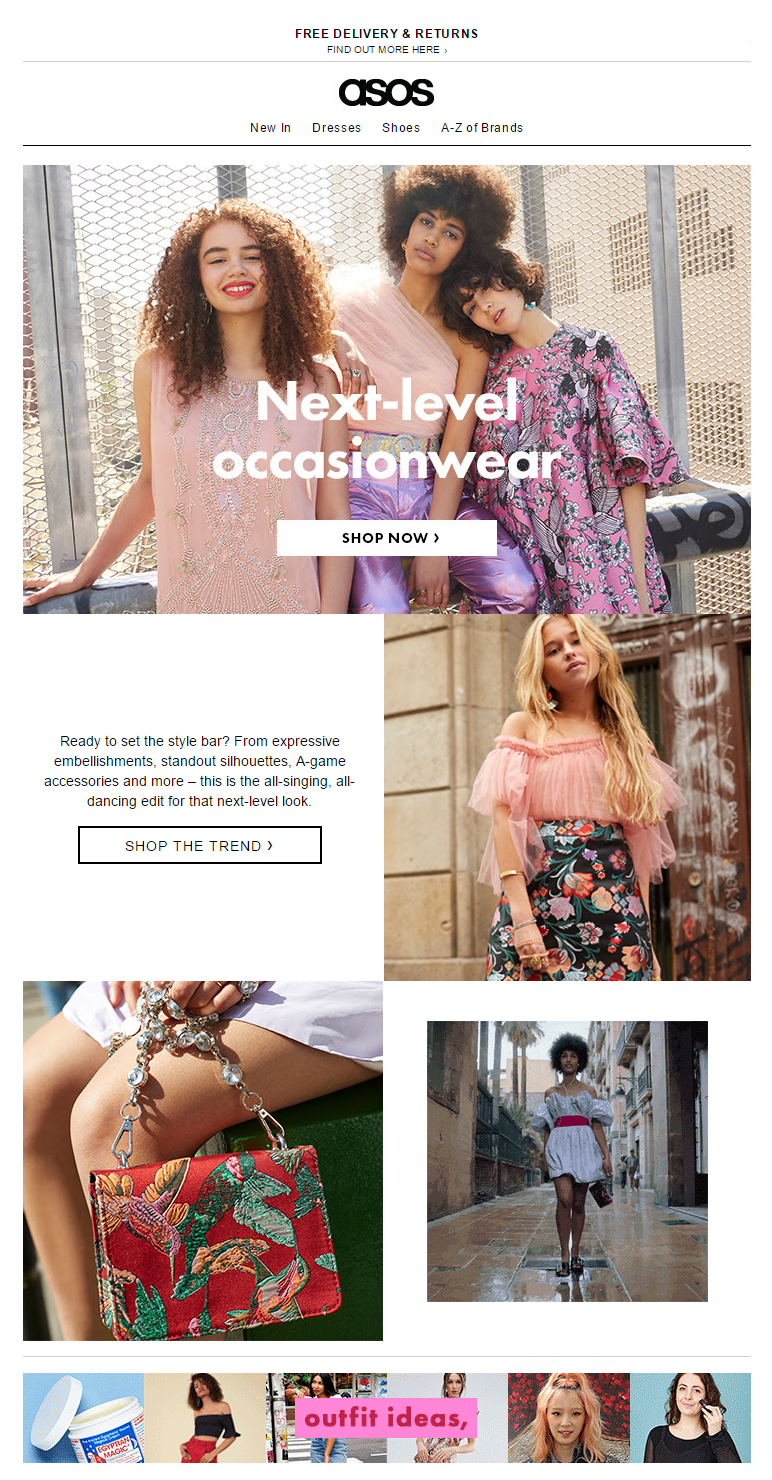
University is kind of like a fashion show, so you need to follow the latest trends to keep up to date with everyone else. But as a university student, I’ll take any discount I can get my hands on. So I signed up to get a 10% student discount code to use on ASOS with my university email address. From then on, I’ve lost count of how many untargeted email newsletters to me. Sometimes, they’ll advertise a 20% offer code, or show me some of the latest men’s fashion. But more often than not, they’ll send me emails all about their women’s products. When am I ever going to buy an embroidered hummingbird bag?

It’s important to segment your email list to make sure you have the best chance at making a conversion. SmartrMail allows you to create Smart Segments, which help you to easily segment your email lists. You can then send emails to customers based on their behaviour, rather than just blasting your whole email list with newsletters.
1. Email Engagement
With SmartrMail, you can choose to segment your email list based on engagement with the emails you’re sending to them. The options given are:
- Has opened any emails in (# Days)
- Has not opened all emails in (# Days)
- Has clicked any emails in (# Days)
- Has clicked any emails in (# Days)
Similar to engagement with individual emails, you can also create a segmented list that focuses on recipients’ engagement with your email campaigns:
- Has opened any emails in last (# Campaigns)
- Has not opened all emails in last (# Campaigns)
- Has clicked all emails in last (# Campaigns)
- Has not clicked all emails in last (# Campaigns)

This probably sounds counter-intuitive, but it’s a good idea to actually send more emails to recipients that open your emails, and send less emails to those who don’t. Hear me out.
While it might seem like sending more emails to disengaged recipients, in an attempt to get them interested, is the way to go. But a better strategy is to send them less emails, with more relevant product recommendations, to ensure that these members of your email list don’t start thinking that you’re annoying. The more of your emails that are left unopened in your subscribers inboxes will also lower your deliverability.

For those who readily engage with your emails, they’re showing some degree of interest in your products. That means that they’re also more likely to convert, so sending them more emails won’t result in them ignoring you or unsubscribing from your email list.
SmartrMail allows you to quickly ensure that your product recommendations for your e-commerce email newsletters are relevant to your recipients.
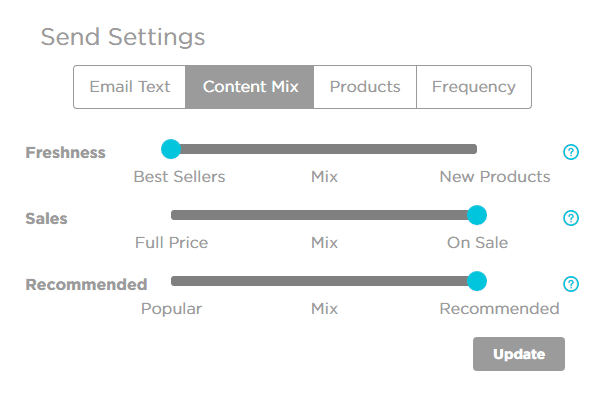
Segmenting your list based on email engagement also allows you to see who isn’t reading your emails at all. With this knowledge, you can start a win back campaign to turn them back into interested customers.
For a detailed guide on how to do this, read this blog post: How to Re-Engage and Win Back Your Store’s Customers with Email Marketing.
As a last resort, list segmentation allows you to remove inactive recipients from your email list. This will help you by cutting down your costs, as well as improving your store’s email deliverability rate.

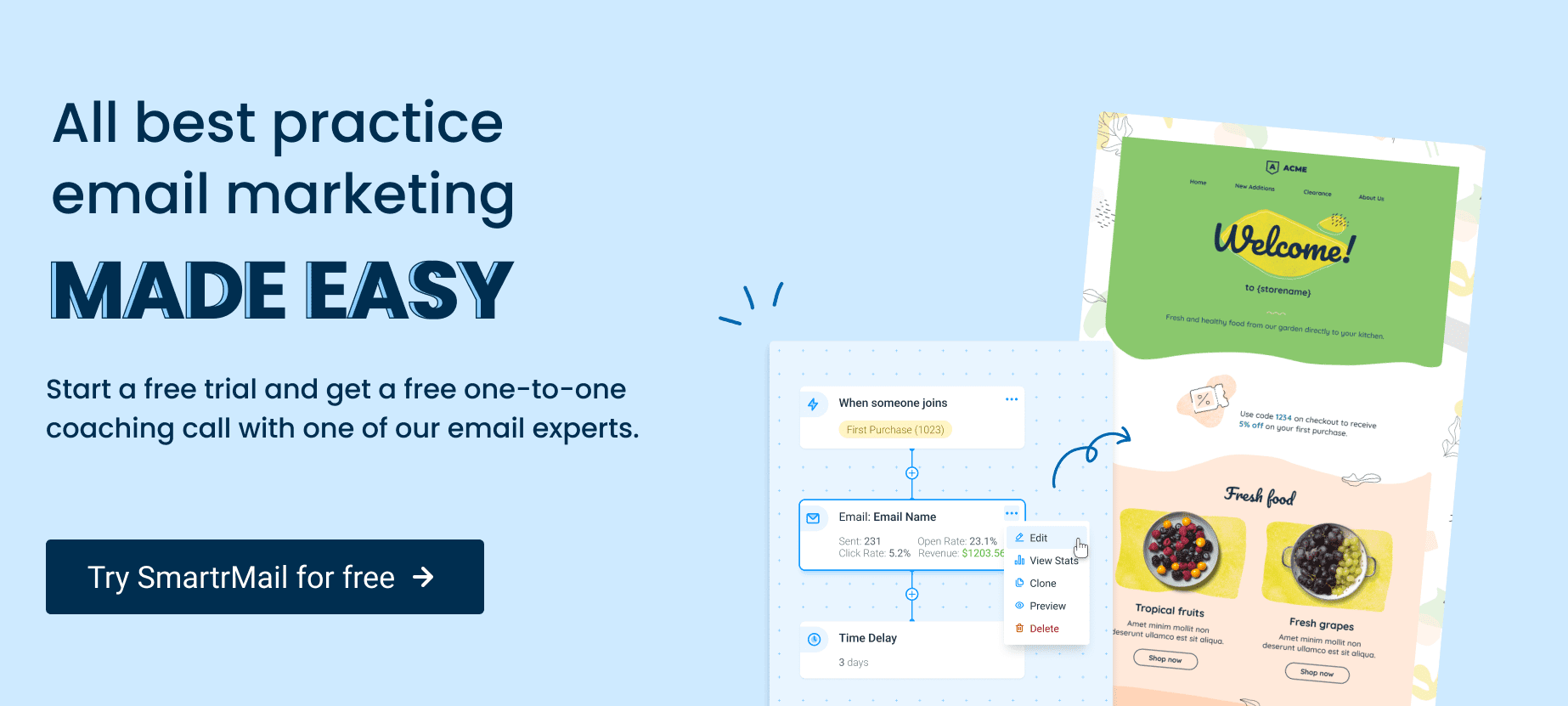
2. Order recency
SmartrMail gives you the following options in segmenting your email list based on order recency:
- Has ordered in (# Days)
- Has not ordered in (# Days)

Segmenting your list based on order recency has a number of benefits for you as an e-commerce store owner.
For the first option, you have the ability to time your emails perfectly. Take a look at your sales stats, and determine the average time between purchases of your products.
This works especially well if you have a product that is finite – makeup or hair products, for example. People are going to run out eventually, so sending a product recommendation email at the right time could result in a conversion.
Your products might not even have to be finite, if you really think about it. Products like books, for instance, are going to be finished being read eventually. So once you figure out the average time between purchases, this strategy can be really effective.
Alternately, segmenting a list based on those who haven’t ordered any products in x amount of days allows you to start encouraging previous customers to purchase again. This is a much better strategy than trying to convert new customers. You can do this by sending them personalized recommendations and offer codes, Facebook Dynamic Ads, and improving your customer experience.
A good idea is to give an offer code after a customer has purchased something, to encourage them to purchase from you once again.
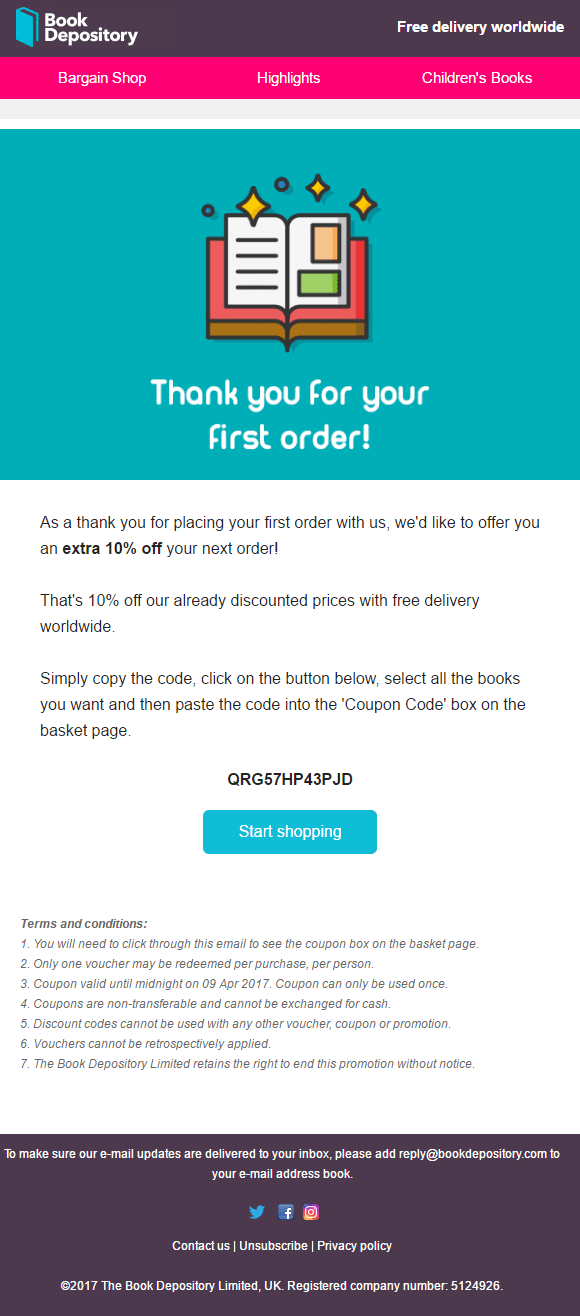
For a more in-depth guide on how to get customers to buy again from you, read this blog post: 4 Ways to Encourage Repeat Purchases from First Time Buyers.
3. Product or Collection Purchase History
You have plenty of options in creating segmented lists based on customers’ previous product purchases:
- Has purchased product
- Has not purchased product
- Has purchased any product
- Has not purchased any product
Similarly, you can choose to segment your list based on collections that a customer has purchased from:
- Has purchased from collection
- Has not purchased from collection
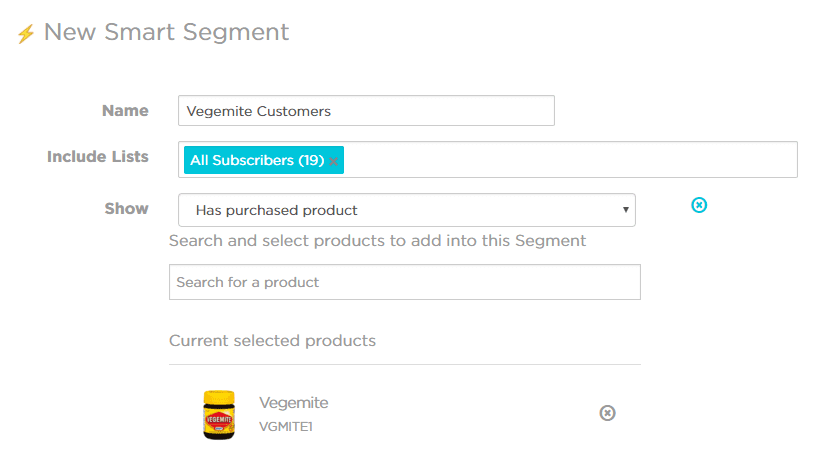
The first benefit to segmenting your email list this way is that you can send relevant product recommendation emails to customers who have purchased a particular product or from a particular collection.
For example, I bought tickets mid-2016 from Ticketmaster to see Keith Urban and Carrie Underwood in December last year. Since then, I haven’t purchased anything concert tickets from Ticketmaster. Aside from some general email newsletters, Ticketmaster has only sent recommendations that are relevant to me based on this previous purchase.
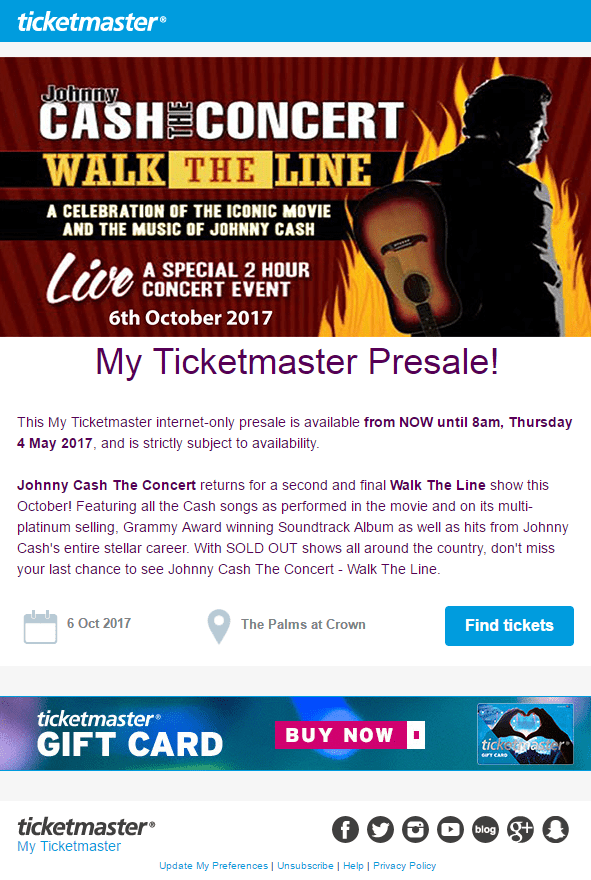
You can also start cross-selling complementary products to this segment as well. For example, if someone has recently purchased a new camera, maybe try cross-selling them some lenses or a protective case.
Similarly, you might want to showcase some of your best or most popular products in a newsletter. Segmenting a list of people who haven’t purchased this product will mean that you won’t risk annoying customers who have already bought this item.
Segment your customers with SmartrMail today
? Install SmartrMail and use our powerful segmentation feature ?
4. Date or Days Added
SmartrMail gives you two options to segments your lists based on when a member of your email list signed up:
- Subscriber added after date
- Subscriber added before date
- Subscriber added less than (# Days) ago
- Subscriber added more than (# Days) ago
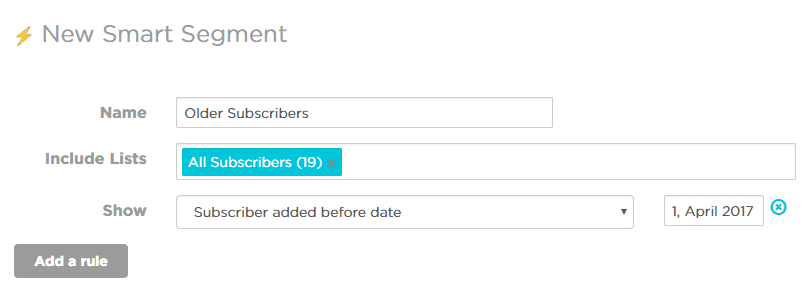
Basically, this allows you to target members of your list’s newest and oldest signups.
For those who have just joined your email list, it’d be best to include popular items in your emails, rather than recommended products. This is simply because you don’t really know them as a customer yet. So by recommending your best and most popular items, you’re putting your best foot forward.
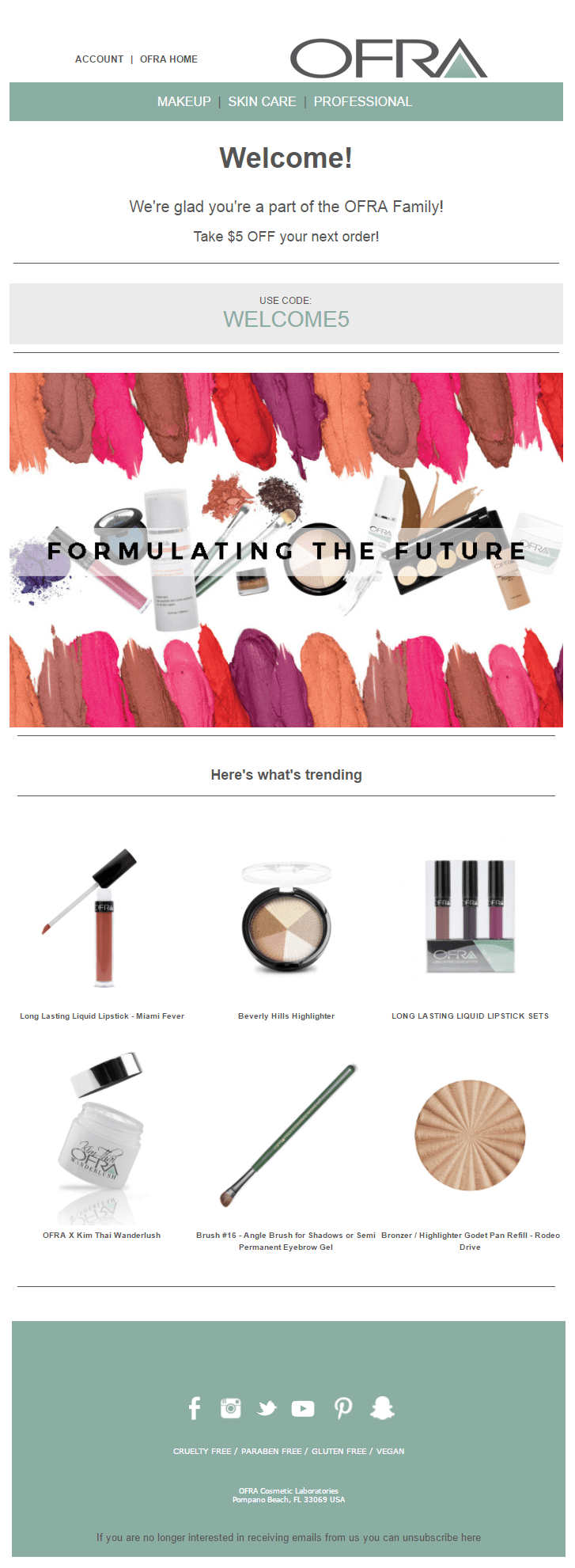
On the flip side, you can send older subscribers more recommended products, because you have more data on what they like. Additionally, they are also the best demographic to send newsletters that feature new products to. Older subscribers who still regularly engage with your emails are loyal, and are obviously interested in what you have to offer. So continually showing them your new stock is a good idea. Even though I shared my thoughts on ASOS’ untargeted newsletters earlier on, I think they do a good job at highlighting new products in their newsletters that correlate with the latest fashion trends.
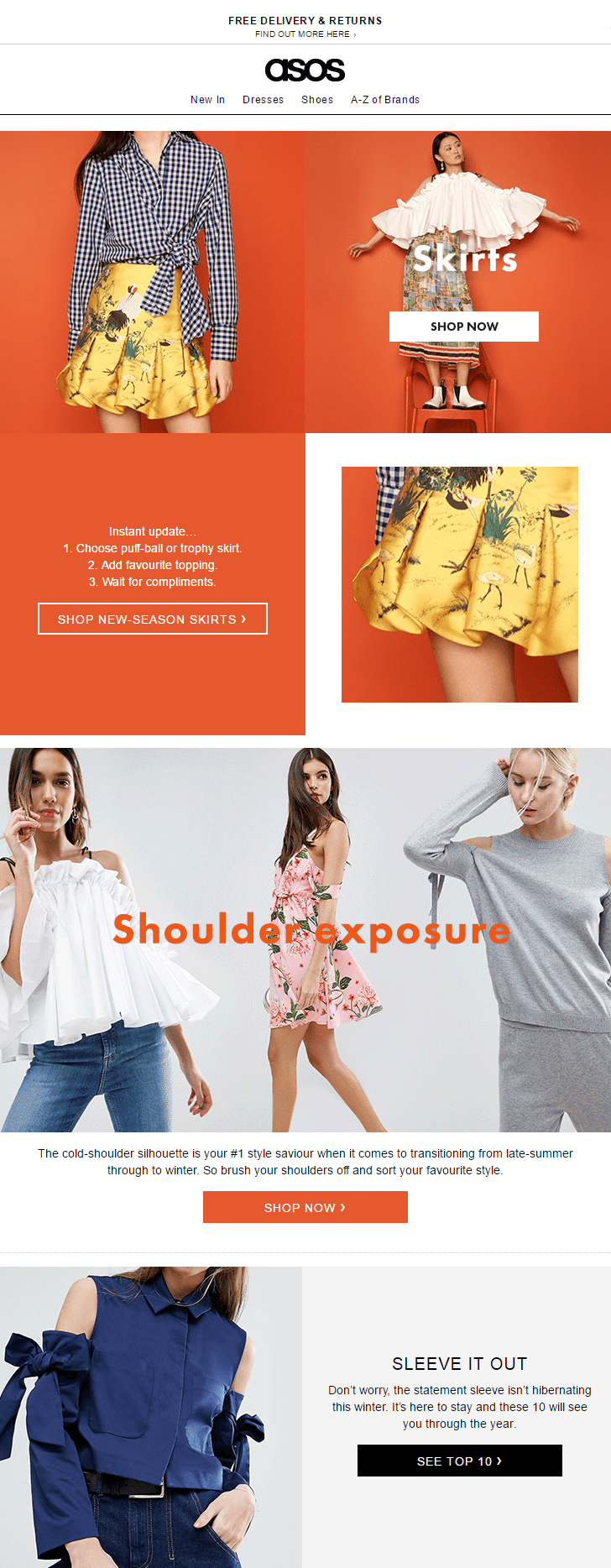
5. Total Orders
A recent addition to our Smart Segments is the Orders (# Total) option.
This options allows you create segments based on your customers’ total number of orders. In turn, this allows you to send different targeted email campaigns to repeat customers or customers who have only purchased from your store once.
You can create a Smart Segment of first time customers by segmenting those in your email list who have ordered from your store only once.

If a customer purchases from your store once, they’re more likely to purchase again. After their first purchase, there’s a 27% chance they’ll come back. But if you can get them to buy from you a second or third time, this figure rises to 54%. Making use of this Smart Segment option is a great way of encouraging these first time buyers to buy from you again.
To read more about how you can use email marketing get first time customers to come back to your store, read here: 4 Ways to Encourage Repeat Purchases from First Time Buyers.
Targeting repeat customers is a much more effective marketing strategy than continually looking for new ones. Not only are they more familiar with your store, they’re much more profitable – repeat customers are more likely to convert, spend more in each transaction, refer your store to friends and family, and eventually purchase from you again.

You can send more emails to this segment – feel free to send your newsletters and product recommendations to them more often.
Sign-up to our newsletter and receive a free eBook with hidden Email Marketing Tips
6. Customer Spend
SmartrMail also now allows you create Segments based on the amount of money customers spend on your products:
- Customer spend ($ Total)
- Customer spend ($ Average)
The first of these options allows you segment and identify your top customers. It’s that old 80/20 rule; the top 20% of your customers generate the most sales for your store. In fact, 40% of e-commerce stores’ revenue is generated by only 8% of customers.

Not only can you send out to them more frequently, but you can really boost your store’s customer LTV by nurturing these high-value customers.
To learn more about how you can do this, read here: How Amazon Nurtures Its High Value Customers (And How You Should Too!).
The second option helps you segment customers for volume sales.
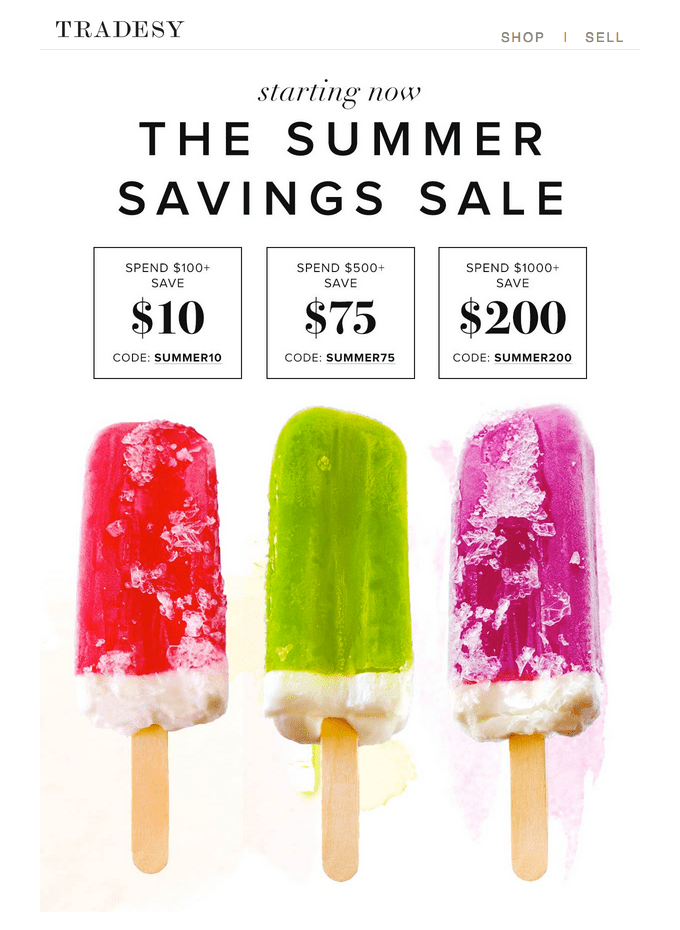
You can target emails featuring this offer towards customers that you know have higher average orders, who would be more likely to make use of this sale.

Conclusion
If you’re not creating segments for your email list, you’re losing out on getting more e-commerce sales. SmartrMail helps you create Smart Segments in minutes, allowing you to easily segment your email list based on email engagement, order recency, product purchase history and date added. We have plenty of segmenting options for you, no matter what products you’re selling, that are guaranteed to get you more e-commerce sales with email marketing. Start a free 15 day trial from SmartrMail today.
